Do you have a question about the MOTO GUZZI V9 Roamer 2016 and is the answer not in the manual?
Initial remarks and introduction to the manual's content.
Guidelines for cleaning and maintaining the motorcycle's exterior.
Crucial safety information regarding hazardous gases and flammable fuel.
Explains the meaning and function of various warning lights on the dashboard.
Procedures for checking essential vehicle fluids like engine oil and brake fluid.
Handling precautions for battery electrolyte and gases to prevent harm.
Instructions for reporting vehicle defects affecting safety.
Diagrams illustrating the location of main motorcycle components.
Overview of the instrument cluster and its displays.
Explains the digital display, warning alarms, and oil sensor indications.
How to operate vehicle controls and navigate trip information displays.
Explains advanced features like trip fuel, backlight adjustment, user codes, and unit settings.
Guides on operating primary controls like ignition, lights, and engine stop.
Explanation of the Anti-lock Braking System (ABS).
Details on Moto Guzzi Controllo Trazione (MGCT) traction control.
Essential checks to ensure safe vehicle operation before riding.
Procedures and precautions for refuelling and fuel tank capacity.
How to adjust suspension and clutch for optimal performance.
Guidance for the initial running-in period and safe riding practices.
Proper parking methods, silencer info, and stand usage.
Recommendations for safe riding, including mounting/dismounting and road rules.
Procedures for checking, topping up, and changing engine oil.
Steps for replacing the engine oil filter.
How to check and manage transmission and gearbox oil levels.
Information on tyre types, pressure, wear, and replacement.
Procedures for spark plug and air filter servicing.
Guidance on checking and topping up brake fluid levels.
Instructions for battery installation, checks, and charging.
Information on fuse replacement and bulb types/replacement.
Procedures for adjusting the headlight beam direction.
How to replace indicator bulbs and optical units.
Procedure for checking brake pad and disc wear.
Steps for storing the vehicle during inactivity and cleaning procedures.
Guidelines for safely transporting the motorcycle.
Key technical specifications for weight, dimensions, engine, and gearbox.
Data on fluid capacities, transmission ratios, and fuel system.
Technical details on chassis, suspension, braking system, and wheel rims.
Specifications for tyres, spark plugs, electrical components, and bulbs.
List of warning lights and their respective functions.
A comprehensive table outlining scheduled maintenance tasks and intervals.
A list of recommended fluids and lubricants for vehicle maintenance.
Information on available dedicated accessories for the vehicle.
Initial remarks and introduction to the manual's content.
Guidelines for cleaning and maintaining the motorcycle's exterior.
Crucial safety information regarding hazardous gases and flammable fuel.
Explains the meaning and function of various warning lights on the dashboard.
Procedures for checking essential vehicle fluids like engine oil and brake fluid.
Handling precautions for battery electrolyte and gases to prevent harm.
Instructions for reporting vehicle defects affecting safety.
Diagrams illustrating the location of main motorcycle components.
Overview of the instrument cluster and its displays.
Explains the digital display, warning alarms, and oil sensor indications.
How to operate vehicle controls and navigate trip information displays.
Explains advanced features like trip fuel, backlight adjustment, user codes, and unit settings.
Guides on operating primary controls like ignition, lights, and engine stop.
Explanation of the Anti-lock Braking System (ABS).
Details on Moto Guzzi Controllo Trazione (MGCT) traction control.
Essential checks to ensure safe vehicle operation before riding.
Procedures and precautions for refuelling and fuel tank capacity.
How to adjust suspension and clutch for optimal performance.
Guidance for the initial running-in period and safe riding practices.
Proper parking methods, silencer info, and stand usage.
Recommendations for safe riding, including mounting/dismounting and road rules.
Procedures for checking, topping up, and changing engine oil.
Steps for replacing the engine oil filter.
How to check and manage transmission and gearbox oil levels.
Information on tyre types, pressure, wear, and replacement.
Procedures for spark plug and air filter servicing.
Guidance on checking and topping up brake fluid levels.
Instructions for battery installation, checks, and charging.
Information on fuse replacement and bulb types/replacement.
Procedures for adjusting the headlight beam direction.
How to replace indicator bulbs and optical units.
Procedure for checking brake pad and disc wear.
Steps for storing the vehicle during inactivity and cleaning procedures.
Guidelines for safely transporting the motorcycle.
Key technical specifications for weight, dimensions, engine, and gearbox.
Data on fluid capacities, transmission ratios, and fuel system.
Technical details on chassis, suspension, braking system, and wheel rims.
Specifications for tyres, spark plugs, electrical components, and bulbs.
List of warning lights and their respective functions.
A comprehensive table outlining scheduled maintenance tasks and intervals.
A list of recommended fluids and lubricants for vehicle maintenance.
Information on available dedicated accessories for the vehicle.
| Engine Type | 90° V-Twin, 4-stroke |
|---|---|
| Displacement | 853 cc |
| Fuel System | Electronic fuel injection |
| Cooling | Air-cooled |
| Transmission | 6-speed |
| Final Drive | Shaft |
| Front Tire | 100/90-19 |
| Rear Tire | 150/80-16 |
| Dry Weight | 199 kg |
| Power | 55 hp (40.5 kW) at 6, 250 rpm |
| Torque | 62 Nm at 3, 000 rpm |
| Frame | Steel tubular cradle |
| Front Suspension | 40 mm hydraulic telescopic fork |
| Rear Suspension | Double shock absorber |
| Front Brake | 320 mm disc, 4-piston caliper |
| Rear Brake | 260 mm disc, 2-piston caliper |
| Wheelbase | 1, 490 mm |
| Fuel Capacity | 15 L (4.0 US gal) |
| Bore x Stroke | 84 x 77 mm |
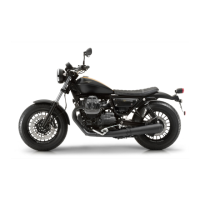


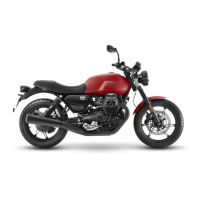
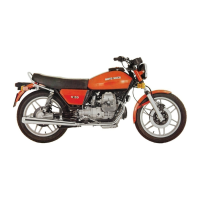
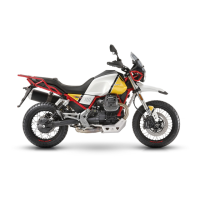
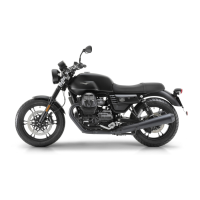
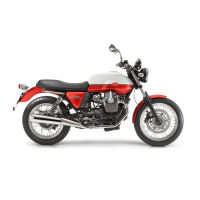
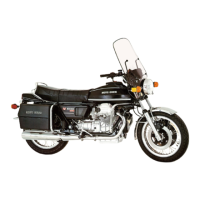

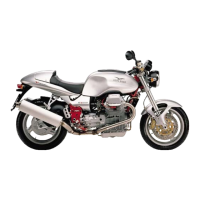

